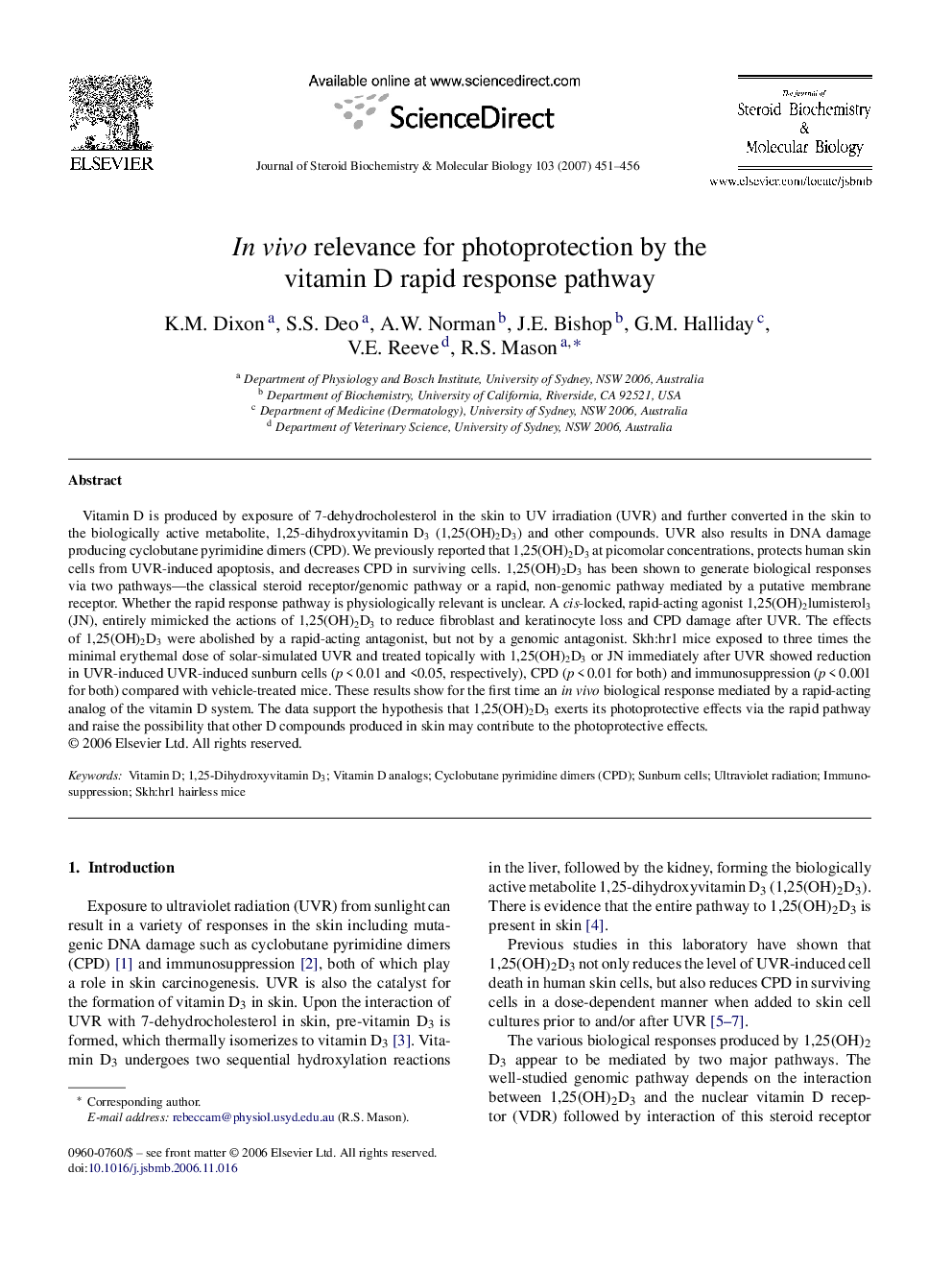| کد مقاله | کد نشریه | سال انتشار | مقاله انگلیسی | نسخه تمام متن |
|---|---|---|---|---|
| 1992560 | 1541078 | 2007 | 6 صفحه PDF | دانلود رایگان |

Vitamin D is produced by exposure of 7-dehydrocholesterol in the skin to UV irradiation (UVR) and further converted in the skin to the biologically active metabolite, 1,25-dihydroxyvitamin D3 (1,25(OH)2D3) and other compounds. UVR also results in DNA damage producing cyclobutane pyrimidine dimers (CPD). We previously reported that 1,25(OH)2D3 at picomolar concentrations, protects human skin cells from UVR-induced apoptosis, and decreases CPD in surviving cells. 1,25(OH)2D3 has been shown to generate biological responses via two pathways—the classical steroid receptor/genomic pathway or a rapid, non-genomic pathway mediated by a putative membrane receptor. Whether the rapid response pathway is physiologically relevant is unclear. A cis-locked, rapid-acting agonist 1,25(OH)2lumisterol3 (JN), entirely mimicked the actions of 1,25(OH)2D3 to reduce fibroblast and keratinocyte loss and CPD damage after UVR. The effects of 1,25(OH)2D3 were abolished by a rapid-acting antagonist, but not by a genomic antagonist. Skh:hr1 mice exposed to three times the minimal erythemal dose of solar-simulated UVR and treated topically with 1,25(OH)2D3 or JN immediately after UVR showed reduction in UVR-induced UVR-induced sunburn cells (p < 0.01 and <0.05, respectively), CPD (p < 0.01 for both) and immunosuppression (p < 0.001 for both) compared with vehicle-treated mice. These results show for the first time an in vivo biological response mediated by a rapid-acting analog of the vitamin D system. The data support the hypothesis that 1,25(OH)2D3 exerts its photoprotective effects via the rapid pathway and raise the possibility that other D compounds produced in skin may contribute to the photoprotective effects.
Journal: The Journal of Steroid Biochemistry and Molecular Biology - Volume 103, Issues 3–5, March 2007, Pages 451–456